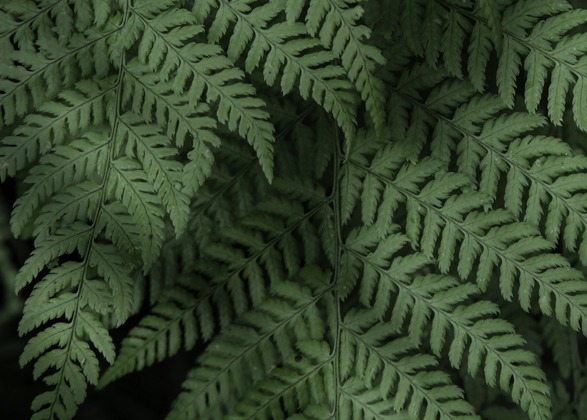The Landscape Photographers Calendar: what to shoot in May

-->
Tony Worobiec is a Fellow of the Royal Photographic Society and one of our Fotospeed photographers. He has won awards for photography both in the UK and internationally, and has authored 16 books. In this blog post, adapted from his RPS workshop, "The Landscape Photographers Calendar", Tony tells you what to look out for in May. Tony uses Fotospeed’s Platinum Baryta and Platinum Matt.
You can find out more about Tony here.
If I was to summarise the month of May in a single word, it would be "green". It is the time of year that the deciduous trees begin to bloom and our fields and pastures appear renewed and joyously verdant. Even when driving to work, one cannot help but be impressed by the rich variety of greens on show, ranging from a rich viridian through to a vibrant lime in the passing fields and hedgerows. If we truly are to exploit the "spirit of May", it is this element of regeneration that we chiefly need to focus on.

Ramson
Ramson, or wild garlic, epitomizes the rich greenness that is so typical of May. Fortunately it can be tracked down in most parts of the UK, and generally prospers on rich sloping pastures under the shade of deciduous trees, where the soil is likely to be moist. Because of the damp conditions, there is often a symbiotic relationship between wild garlic and ferns. At this time of year their fronds appear almost faultless, making a lovely feature within a spread of wild garlic. The secret is to isolate a single fern. You may also be fortunate enough to capture a sprinkling of bluebells that are still in bloom. Either way, they offer tremendous opportunities for close-up, intimate landscapes.
What makes ramson so appealing are the lovely white flowers they produce - whether you shoot in colour or in monochrome, the effects can be utterly charming. Ideally, they are best photographed on an overcast day when there is little or no wind as this allows you to use a long lens and, of course, a tripod.

Pond-life
A landscape feature that is commonly overlooked are small ponds. May is a wonderful time to investigate them as this is the time water-lilies first begin to appear. Whether you are photographing in a garden or in much wilder locations, the images can prove strangely enigmatic at this time of year.
It is important to understand that the plants are unlikely to be in full bloom in May; instead the emerging growth creates rather interesting abstract effects which can look quite wonderful when set against an area of still water.
In order to best exploit the abstract potential, but also to remove any unwanted reflections, use a polarising filter. If you are fortunate enough to be shooting under a blue sky, the background colour will be dramatically enhanced if you do. From a compositional standpoint there is often very little structure in these locations, so why not consider presenting your image in a square format, which adds discipline to an otherwise unwieldy arrangement? Try photographing pre-dawn or near dusk when you are most likely to encounter calm weather. Also, don't forget that Fotospeed now have a wonderful range of square format papers for you to print on!

Greens are good for you
I am not a horticulturist and probably would struggle to name more than a dozen species of plants, but even I am utterly fascinated by the sheer beauty of newly emerging wild perennials which appear at their most resplendent throughout the month of May. Look for a grouping that is without blemish; if there are any dead leaves, pick them out before photographing them. If there is a natural bloom (and often there is), include a single perfect specimen within the composition.
Lighting of course is important, and usually it is best to take your shots on an overcast day. The light is often much softer in these conditions, therefore the sculpted form of the leaves becomes much more evident.
Get in close. If necessary, use a macro-lens. In this example, I have opted to use a narrow aperture to ensure everything remains sharp, although equally interesting shots can be achieved by using a very narrow depth of field - it is a matter of personal choice.

Ox-eye daisies
One of the aims of this series of blogs is to encourage you to value what appears naturally around you, and few of you will not have noticed the emergence of the ox-eye daisies that are such a feature during the month of May. They are so common in fact, that it is easy to overlook them as a credible subject for landscape photography. They tend to grow alongside road verges which does make them slightly awkward to photograph, but often you will find a convenient lay-by close to where they are growing. Once again, reach for your telephoto or your macro-lens for the best results.
Ox-eye daisy is a grassland perennial and our largest native member of the daisy family. It has a medium tall un-branched stem topped by a solitary composite flower of white petals surrounding a yellow disc floret. If you want to achieve something different, why not try a multiple exposure, with one frame in-focus and the second out of focus? The effects can prove amazingly "impressionistic". Most cameras offer this facility, but you may need to hunt into its menu to find it. Another technique you may wish to explore is using a slow shutter-speed, particularly if it is breezy. With your camera attached to your tripod, set the shutter speed to half a second; the results can prove hauntingly beautiful.

Infra-red Photography
If you are toying with the idea of infrared photography (IR), I cannot think of a better month to start than in May. As we have already seen, this is the time of year when plants and trees truly blossom, which can be spectacularly captured when shooting in IR. This medium is of course sensitive to both colour and monochrome, although most photographers opt for the latter.
So, how does one achieve an IR effect? If you are shooting digitally, as most photographers are, then there are two methods. The first is to fit a specialised IR filter over the lens which only allows a light spectrum above 720nm to enter the camera. This is a very straightforward method for achieving an IR effect, although these filters greatly reduce the amount of light reaching the sensor and can require very long exposure times. A more drastic alternative is to have your DSLR camera converted to IR. This requires stripping out the original sensor and replacing it with one which is only sensitive to IR. Radical as it seems, this option certainly is well worth considering if you have an older DSLR which you no longer use, as the results can well justify the additional expense. There are various UK based companies able to do this for you.
If you are a photographic traditionalist your main difficulty will be to source infrared film; fortunately Rollei still produce this niche product, and the few reviews I was able to read on the Amazon website warmly praise it. In order to get the best effects, it will need to be used in conjunction with a traditional red filter. Whether you shoot digitally or on film aim to capture newly growing vegetation which will appear spectacularly white during the month of May.

At The End Of The Rainbow
Finally, let's turn to weather (a subject of course which is dear to my heart).It is of course possible to see rainbows at any time of the year, but because the land is steadily warming up, they can appear quite showy during the month of May. If you can find a simple landscape location with a single dominant feature, then capturing a worthy photograph should never be a problem.
In order to form a rainbow two conditions are required. The first is moisture in the air, either in the form of mist or rain. The second is sunlight. We normally see the best rainbows shortly after a shower and the sun behind us begins to illuminate the passing storm-clouds. One rarely sees a rainbow during an extended period of rain, particularly when we are experiencing a prolonged Low.
Always be aware of a second rainbow. As I was taking this shot, a second gradually emerged; it is always nice to have that option. There is often a debate whether to use a polarizing filter helps when shooting rainbows. These filters are best used when the sun is at 90 degrees, but of course a rainbow only appears when the sun is directly behind you. It is worth experimenting, but the polarizing effect will never be especially dramatic.
Want more ideas on how to improve your photography and prints? Check out the rest of our blog, or get in touch to see how Fotospeed can help!
If you would like to stay on top of all the latest information from Fotospeed don't forget to sign up to our Newsletter.



